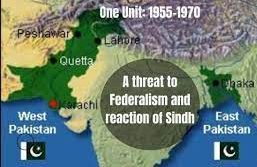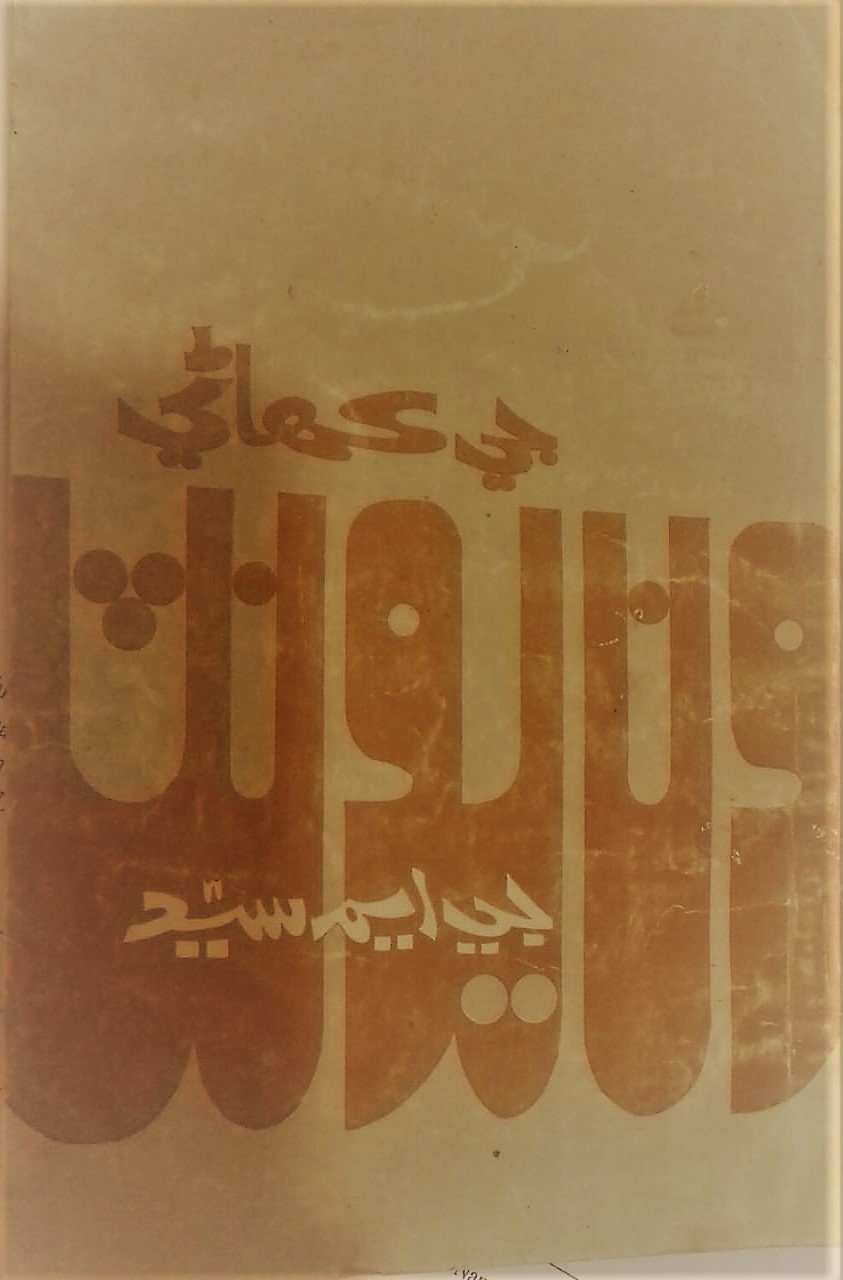
As a result of one and half a decade long movement, the One Unit was abolished on July 1, 1970 and the entity of provinces was restored.
Dr. Zaffar Junejo
(Author’s Note: One Unit was dissolved on 1st July, 1970. Sindhi nation along with Bengalis, Balochis, and Pathans fought against it through platforms of cultural associations, literary organizations and political parties. By and large One Unit was opposed across Pakistan however the Anti-One Unit Movement’s epicenter was Sindh. Sindh opposed One Unit because it was considered a tool to alter its demography, grab resources and strategically control wealth of the province. Sindhi nationalists, supported by other political parties forged an association to realize one point agenda – dismantle One Unit. They carried the struggle in all odd and even situations, and bore the cost – jails, punishments, insults, life threats and issuing of ‘certificates’ of disloyalty and treachery but they continued their struggles, and got it undone – Sindh was restored with its full name, and titles.
In 2020, an idea was floated by some Sindh-lovers that Sindh has to celebrate Anti-One Unit Abolition Day as the Golden Jubilee event, just to cherish, and recall the successful struggle of Sindhi peoples. In this regard, the author intends to translate some of the basic and most relevant documents from Sindhi language into English, in sprit of celebration and remembrance. The first in the series is Saeen GM Syed’s article: One Unit Jo Qiyam: Mukhalfan Ja Khadsha and Muwafqan Ja Faidi Mean Dalil (Formation of One Unit: Opponents’ Apprehensions and Supporters’ Arguments in its favor)

The article is taken from the booklet: One Unit Ji Kahani (The Story of One Unit). The book was authored by GM Syed and published by Yar Muhammad Ibin Hayat Panhwar, Secretary Sindh Mutaheda Mahaz, Markazi Office, Al-Khalil Building, Qazi Qayoum Road, Hyderabad. Its printer was Begum Zeenat Channa, ‘Zeenat Printers’ Khokhar Mahlo Hyderabad. Its first edition with 2000 copied came in November, 1969 – Dr. Zaffar Junejo.)
Formation of One Unit
Opponents’ Apprehensions and Supporters’ Arguments in its favor
GM Syed
Since ancient times, Sindh, Sarhad (Now Khyber Pakhtunkhwa), and Balochistan’s strategic locations and fertility, (and presently mines and minerals) have inculcated greed among outsiders and other nations. In this regard history has witnessed aggressions, invasions and intrigues of Mughals, Pathans, Sikhs, English people and foreigners.
When the independence from British Government became reality, and was not a distant dream – the question of the provinces’ status came under discussion – what their status should be in new situations. This question got different responses. One large group of Hindus was against Sindh’s separation from Bombay (Now Mumbai).

On the other hand, a large number of Indian Muslims was sympathetic to the provincial autonomy of Sindh, Sarhad and Baluchistan. Amidst that political turmoil, a group also existed that was of the opinion that provinces of the present West Pakistan should be grouped into one entity. If we look at Allama Iqbal’s ‘Allahabad Sermon’, it is vivid and states the same.
The scheme remained dormant until death of Quad-e-Azam and Nawabzada Liquat Ali Khan. Afterwards, conspiracies were hatched and schemes were designed. In this regard, one could quote Sardar Abdul Rashid Khan’s (former Chief Minister of Sarhad) scheme which he presented in the Constitutional Assembly. The document clearly argued in favor of unification.

Later, the proposed scheme was called, ‘X-Document.’ The document’s suggestions were implemented through various actions; some of them are briefly presented here:
- Sir Nizamudin’s government was dismissed, although he was Prime Minister, as well as President of Muslim League Pakistan, and enjoyed the majority in the Constitutional Assembly. Immediately, Mr. Muhammad Ali Bogra, Pakistan’s Ambassador in America was called, nominated as Prime Minister and proposed as the President All Pakistan Muslim League. In those times, morale of the members of the Central Assembly, and councilors of All-Pakistan Muslim League was so shattered that change was accepted with a joy or regret, none knows.
- Mr. Abdul Sattar Pirzado’s government was in majority in Sindh, and he was opponent of One Unit. Therefore, he was dismissed, and they brought in Khan Bahadur Muhammad Ayub Khuhro, although he was banned under PRODA. Immediately, all bars were removed. Mr. Khuhro was nominated Sindh’s Chief Minister, although he was not a member of Sindh Assembly. The coercive measures were applied against the weakest members of Sindh Assembly; they were compelled to support One-Unit. Resultantly, One Unit scheme resolution was passed by majority vote.
- Hassan Mahmood’s Government in Bahawalpur was dismissed.
- Sardar Abdul Rashid, who was Chief Minister of Sarhad, supporter of One Unit and had succeeded to pass it from Sarhad Assembly, was dismissed. It happened so, because he raised his voice and complained that he has been betrayed, and none of promises and guarantees had been realized.
- Opponents of One Unit Scheme were threatened, pressurized, jailed and all means were used to harass them.
- In 1954, the constituent assembly finalized the constitution, and it was ready to be signed by the Governor General. But, suddenly Ghulam Muhammad, Governor General announced the dissolution of the constitutional assembly. Soon, late Molvi Tamizuddin, the then Speaker of the constituent assembly filed a writ petition in Sindh High Court. The court verdict came against the action of the Governor General. The Governor General challenged the decision in the Supreme Court. The Chief Justice, rejected the decision of Sindh Court, and approved the action taken by the Governor General.
Afterwards, the Governor General through undemocratic means, and in same uncertain situations, got elected new constituent Assembly. Again, through various tricks and treacheries the constitution of 1956 was passed. (Continues)
__________________
 Dr. Zaffar Junejo has a Ph.D. in History from the University of Malaya. His areas of interest are post-colonial history, social history and peasants’ history.
Dr. Zaffar Junejo has a Ph.D. in History from the University of Malaya. His areas of interest are post-colonial history, social history and peasants’ history.